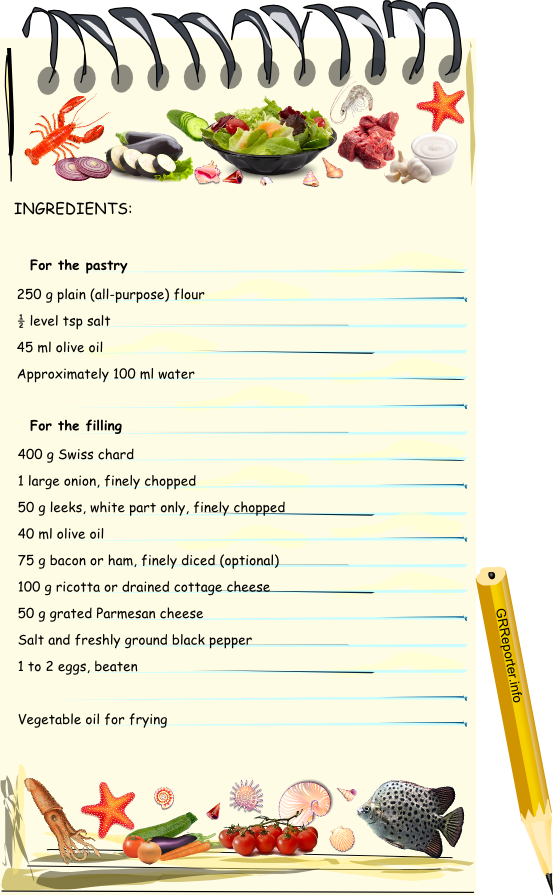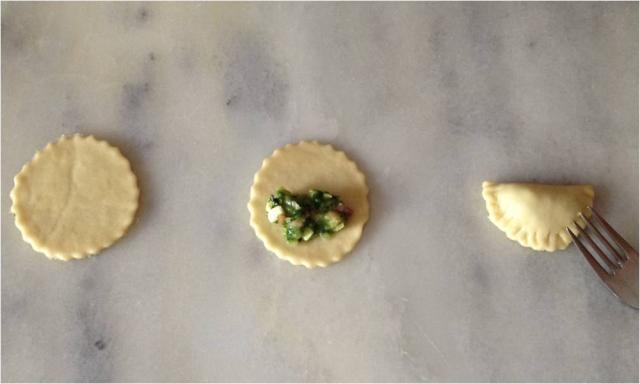Danielle Lachana
Today we arrive in Monaco, which is the second smallest country in the world covering just over 2 square kilometres. Monaco is ruled by Prince Albert and today's recipe is a version of his favourite snack - often served as an appetizer - which originated right here in Monaco, where it is known as ''Barbaguian'' or ''Barbajuan'' (Uncle John).
Generally chard is the main vegetable used but sometimes spinach is added. For a vegetarian version simply leave out the bacon or ham.
You can if you like use ready-made pastry, but the pastry here is so quick and simple to make that it really is worthwhile doing it yourself.
***
RECIPE
(Makes about 30)

METHOD
For the dough, sift the flour with the salt into a bowl and form a ''well'' (hollow) in the centre. Pour in the oil and mix in lightly. Add half of the water and stir to combine. Continue to mix adding enough water to bring the mixture together. Either knead by hand or in a mixer with a dough hook on low to medium speed until a smooth elastic dough is obtained. Wrap in cling film (plastic wrap) and leave to rest in the fridge for 1 hour.
Meanwhile make the filling.
Remove all the stalks from the Swiss chard and wash the leaves well. Cook the leaves in boiling salted water for about 5 minutes or until very tender. Drain and, when cool enough, squeeze to remove excess water. Finely chop.
Fry the onion and leek in the olive oil until lightly browned. If using bacon add it now and cook for about 2 minutes until done. If using ham add it without cooking. Remove from the heat and stir in the chard.
Transfer to a bowl and stir in the ricotta cheese and the Parmesan. Season to taste with salt and pepper.
Add as much of the beaten egg as required to achieve a creamy, but not liquid, consistency.
Remove the cling film and roll out the dough very thinly, on a lightly floured surface, to a thickness of 2 mm.
Cut into rounds of about 6 to 8 cm in diameter with a pastry cutter or rim of a glass. Put a little of the filling on the bottom half of each the pastry disc and dampen the edges with water. Fold in half and crimp the edges with the prongs of a fork to seal well so that the filling cannot escape.

Pour the vegetable oil into a fryer or deep pan to a depth of about 4 cm and heat to between 180o C and 190o C (350o F to 375o F).
Fry the pastries in the hot oil for about 8 minutes or until puffed up and golden brown, turning now and again to achieve an even colour.

Remove with a slotted spoon and drain on absorbent kitchen paper.
Serve warm or at room temperature in a basket or dish lined with napkins.